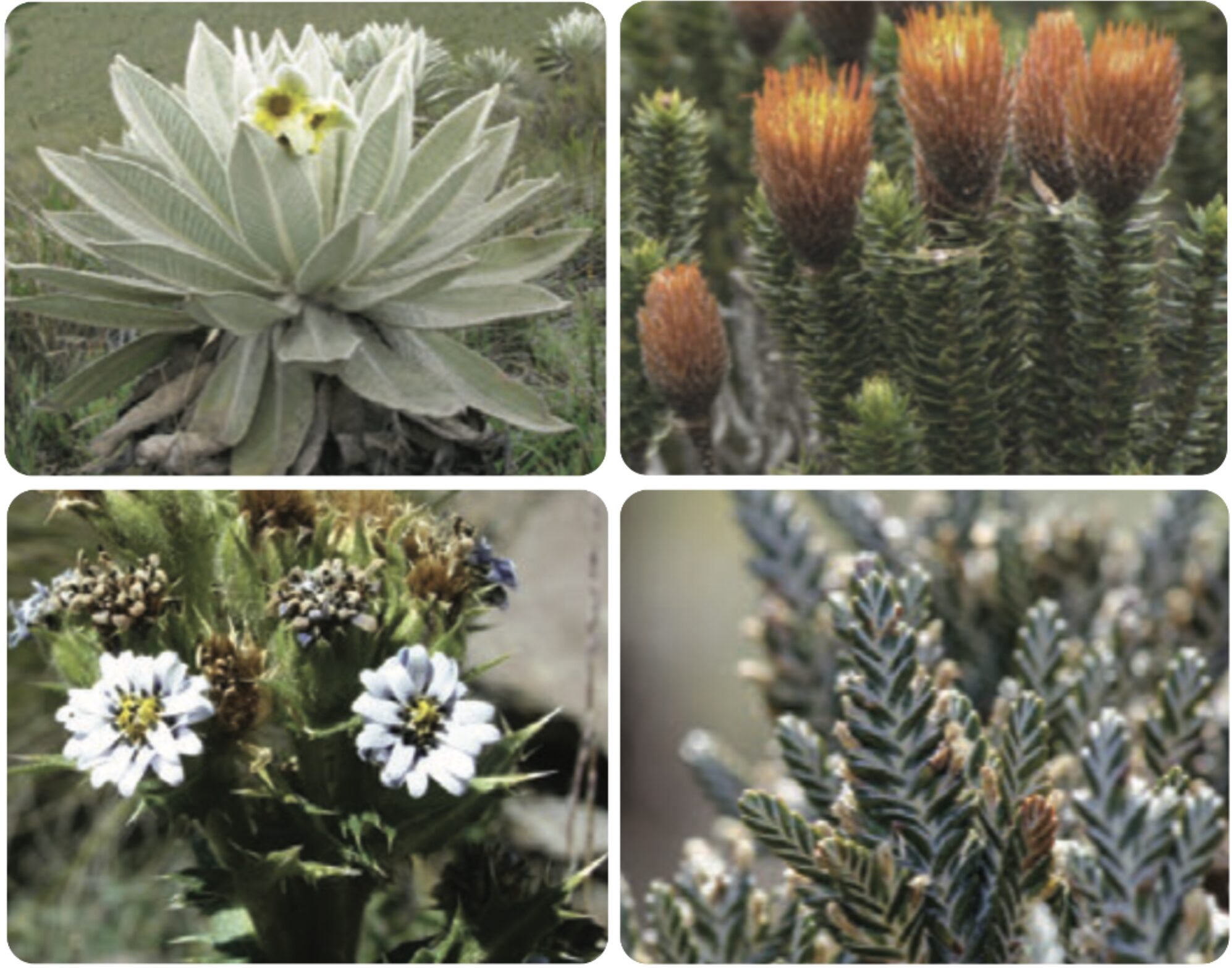GLORIA network studies dispersal strategies of flowers in the High Andes

Dispersal investment of High Andes plants
The GLORIA (Global Observation Research Initiative in Alpine Environments)-Andes network continues to provide basic knowledge about high Andean ecosystems, essential to understanding how native species feel the effects of climate change. A group of 29 researchers associated with the Network, lead by Carolina Tovar (Royal Botanical Garden, Kew), has published a study that analyzes how the most common plants of the páramos and punas manage to overcome geographical barriers to disperse their seeds. The article, “Investment strategies in diaspore dispersal in Compositae: the case of the Andean highlands”, has been published in the journal Annals of Botany.
The study analyses Compositae species (daisies) in communities located on mountain peaks where the GLORIA network maintains permanent monitoring sites. From the morphological characteristics of their diaspore, which in the Compositae species is composed by the achene (containing the seed) and the pappus (bristles that aid dispersal) it is determined how much each plant “invests” on its dispersal. Dispersal investment is related to the distances that plants can propagate their seeds, and is therefore a key element in maintaining species populations.
This is important in alpine habitats like the Andes, which are naturally fragmented. Mountains are like islands in the sky, separated by geography and climate, so plant dispersal strategies are a key element in maintaining populations. Today, two main barriers divide the Cordillera: the Huancabamba depression in Peru, which separates the Northern and Central Andes; and the changes in altitude and precipitation that occur between the Central and Southern Andes, where the mountain ranges narrow. But these barriers are not permanent over time, and it is possible that climate change affects them, so it is key to know the different strategies that Andean plants have to overcome them and disperse their seeds.
This article is based on the original text “Strategies of diaspore dispersal investment in Compositae: the case of the Andean highlands” published in Annals of Botany XX, under the CC BY 4.0 DEED license in July 2023. Please note that references have been removed. For more detail, full references, and to quote text please use the paper available for download on the right.
Methods and Tools
Diaspore trait data for 125 species of plants of the Compositae group on 47 high Andean tropical summits was collected, focusing on characteristics that are known to be an indicator of dispersal investment.
The authors first determined the main abiotic (temperature, elevation and latitude) and biotic (phylogenetic signals and differences between tribes) factors in diaspora traits among Compositae in the Andes. Then, they used phylogenomics, distribution models and community ecology analysis to determine wether these traits are related to distribution patterns in the Andes, and how this influences their ability to cross geographic barriers.
Outcomes and Impacts
It is found that dispersion inversion increases with elevation, possibly to compensate for lower air density. Diaspora traits show significant phylogenetic signal, with greater dispersal reversal observed in Gnaphalieae, Astereae, and Senecioneae, which together represent 72% of the species. Restricted high Andean species found in the tropical Andes have, on average, a significantly greater dispersal investment than species present only in the northern Andes or only in the central Andes.
High dispersal inversion of diaspores dominate among the high Andean compounds; but traits are also correlated with environmental gradients within high Andean grasslands. Results also suggest that investment in diaspore dispersal is likely to shape species distribution patterns in naturally fragmented habitats.
Further resources
- Suggested Citation:Tovar et. al (2023). Strategies of diaspore dispersal investment in Compositae: the case of the Andean highlands. Annals of Botany XX:1–13, 2023. https://doi.org/10.1093/aob/mcad099
- ROSA, the Andean Network of Socio-ecological Observatories: Integrated monitoring for land management in the Andes
- Pioneering study analyzes how plant communities throughout the High Andes are responding to climate change
- The high Andean basins face climate change: Results from seven case studies on vulnerability
- Long-Term Social-Ecological Monitoring in the Andes: How are we doing?
- Building strongholds for people and nature in the high Andes

Comments
There is no content